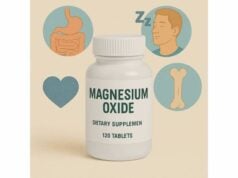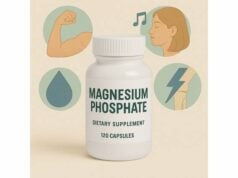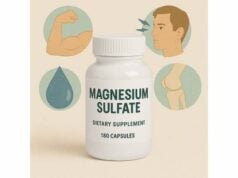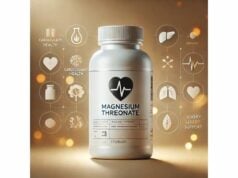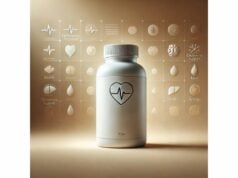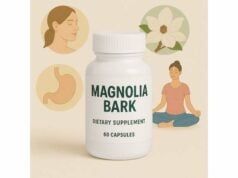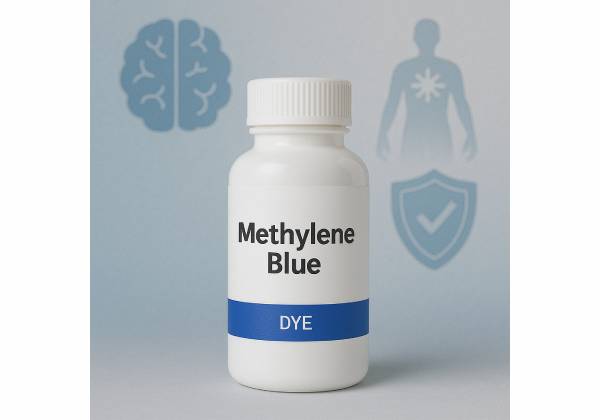
Methylene blue (also known as methylthioninium chloride) is a century-old synthetic dye with modern medical uses. Clinicians rely on it to reverse acquired methemoglobinemia—a condition that limits oxygen delivery—and, in select settings, to counter ifosfamide-induced encephalopathy, support vasoplegic shock, or map lymph nodes during surgery. Beyond the hospital, interest has surged around low-dose methylene blue for cognition and mitochondrial support. That interest outpaces the human evidence, and safety nuances matter: methylene blue is a reversible monoamine oxidase inhibitor (MAOI), can precipitate serotonin syndrome with serotonergic drugs, and is unsafe for certain populations (notably G6PD deficiency and pregnancy). This guide explains how methylene blue works, where benefits are solid vs. speculative, how to dose it appropriately under medical guidance, and how to avoid common pitfalls. You will also find practical examples, timing strategies, and an evidence snapshot—so you can weigh potential benefits against risks with clarity and care.
Key Insights
- Rapidly reverses acquired methemoglobinemia; typical emergency dose is 1–2 mg/kg IV.
- Low-dose oral ranges studied for cognition are 0.5–4 mg/kg; evidence remains preliminary.
- Strong interaction risk: avoid with SSRIs, SNRIs, and other serotonergic drugs due to MAOI effects.
- Contraindicated in pregnancy and generally avoided in G6PD deficiency; specialist input required.
- Urine, stool, and skin discoloration are common and benign; serious effects occur at higher doses.
Table of Contents
- What it is and how it works
- Where it helps for real
- Who benefits and when to consider it
- Dosing, forms, and timing (medical and supplemental contexts)
- Common mistakes and troubleshooting
- Safety, interactions, and who should avoid it
- Evidence snapshot and practical FAQs
What it is and how it works
Methylene blue is a water-soluble phenothiazine dye that doubles as a pharmacologic redox agent. In the bloodstream it participates in electron cycling: at low concentrations, it accepts electrons (is reduced to leucomethylene blue) and donates them back where needed. In acquired methemoglobinemia—where iron in hemoglobin is oxidized to the ferric state (Fe³⁺) and cannot carry oxygen—reduced methylene blue donates electrons that convert methemoglobin back to functional hemoglobin (Fe²⁺). That rapid redox “rescue” restores arterial oxygen content and relieves tissue hypoxia.
The molecule also inhibits nitric oxide synthase and soluble guanylate cyclase. Those actions reduce cGMP signaling, tighten vascular tone, and can raise systemic vascular resistance—one reason methylene blue has a role, under specialist care, in vasoplegic shock during or after cardiac surgery.
At the mitochondrial level, low-dose methylene blue can act as an alternative electron carrier. In preclinical and early human studies, it supports complex IV (cytochrome c oxidase) activity, potentially improving energy metabolism in regions with high demand. This mechanistic signal underlies current interest in cognition and neuroprotection, although clinical outcomes data in typical, healthy users remain limited.
The drug’s MAOI activity is clinically important. By inhibiting monoamine oxidase A, methylene blue can raise synaptic serotonin. Combined with SSRIs, SNRIs, clomipramine, certain MAOIs, and other serotonergic agents, it may precipitate serotonin syndrome—a medical emergency. This interaction risk shapes prescribing in both hospital and outpatient contexts.
Finally, pharmacokinetics are dose-dependent. Intravenous dosing yields rapid distribution and a longish terminal half-life (about a day). Renal impairment increases exposure. Orally, methylene blue is variably absorbed; both parent drug and its metabolite (azure B) appear in plasma and urine. Discoloration of urine and stool (blue-green) is expected and harmless.
Where it helps for real
1) Acquired methemoglobinemia (core indication).
This is methylene blue’s clearest life-saving role. Triggers include oxidizing drugs (e.g., dapsone, benzocaine), nitrates/nitrites, and certain industrial exposures. Treatment with oxygen and intravenous methylene blue rapidly reduces methemoglobin, often normalizing pulse oximetry and symptoms within minutes. Clinicians typically treat when levels exceed ~20–30% or at lower levels if the patient is symptomatic. Most adults require a single weight-based dose, with careful monitoring for response and rare rebound.
2) Ifosfamide-induced encephalopathy (specialist use).
Methylene blue can block formation of neurotoxic chloroacetaldehyde metabolites, helping reverse encephalopathy. Protocols vary (e.g., 50 mg IV every 4 hours until symptoms resolve). This is oncologic supportive care and requires hospital oversight.
3) Vasoplegic shock during cardiac surgery (specialist use).
When catecholamine-refractory vasoplegia persists, methylene blue may increase vascular resistance and blood pressure, buying time while underlying drivers are addressed. Dosing is individualized, with attention to hemodynamics, oxygenation, and overall shock management.
4) Lymphatic mapping and surgical visualization.
As a dye, methylene blue helps identify sentinel lymph nodes or parathyroid tissue intra-operatively. This is a procedural use rather than systemic therapy.
5) Cognitive effects (emerging, not definitive).
Small randomized trials in healthy adults show that a single low oral dose can modulate functional MRI signals in attention and working-memory networks and yield modest task-level improvements. The signal is intriguing but preliminary: studies are short, samples are small, and there’s no consensus on chronic benefits or optimal outpatient dosing. The dose-response appears hormetic—benefits reported at ~0.5–4 mg/kg, with potential performance decrements at higher levels—so “more” is not better.
6) Other investigational areas.
Preclinical and early human studies explore neuroprotection, mood modulation, malaria combinations, and photodynamic antimicrobial therapy. These remain research domains. Over-the-counter use for broad “mitochondrial boosting,” anti-aging, or mood support lacks robust, long-term clinical outcomes.
Bottom line: the strongest, established benefit is rapid reversal of methemoglobinemia. Other hospital uses exist under specialist supervision. Cognitive enhancement data are hypothesis-generating, not a license for unsupervised self-experimentation.
Who benefits and when to consider it
Clear medical need (seek urgent care):
- Suspected or confirmed acquired methemoglobinemia with cyanosis, hypoxia unresponsive to oxygen, chocolate-colored blood, or a “saturation gap.”
- Ifosfamide-induced encephalopathy during chemotherapy.
- Catecholamine-refractory vasoplegic shock around cardiac surgery.
These scenarios are not DIY; treatment is intravenous, monitored, and time-sensitive.
Potential outpatient scenarios requiring clinician input:
- Post-exposure watch: After significant oxidant exposure (e.g., high-dose dapsone or benzocaine), clinicians may monitor for delayed methemoglobinemia and treat if needed.
- Research-context cognition: Select centers may use low-dose oral methylene blue in trials targeting memory circuits. Outside clinical studies, routine use is not endorsed because of safety interactions and limited outcomes data.
People who should be screened or monitored carefully:
- On serotonergic drugs (SSRIs, SNRIs, clomipramine, MAOIs, certain migraine agents): interaction risk is high; many patients must stop the serotonergic medication for a washout interval before medically necessary methylene blue is given.
- With possible G6PD deficiency: enzyme deficiency impairs methylene blue reduction and can trigger hemolysis; avoidance or alternate strategies are considered.
- With renal or hepatic impairment: systemic exposure is higher; dosing and monitoring adjust accordingly.
- Neonates and infants: greater sensitivity to oxidants; pediatric use is specialist-directed.
- Pregnancy: methylene blue is contraindicated; intra-amniotic exposure has been linked to fetal harm.
Who generally should not use it outside medical care:
- Anyone seeking “energy,” mood elevation, or anti-aging benefits without a defined indication.
- People self-treating while on serotonergic medications.
- Individuals attempting to do-it-yourself IV or high-dose protocols.
Practical way to decide:
If the goal is to treat a diagnosed medical condition, talk to your clinician about whether methylene blue is indicated and safe given your meds and genetics. If the goal is general cognitive support, consider established, lower-risk levers (sleep, exercise, creatine for vegetarians, omega-3s for low-fish diets) while awaiting more definitive methylene blue data.
Dosing, forms, and timing (medical and supplemental contexts)
Hospital/urgent indications (typical adult ranges):
- Acquired methemoglobinemia (IV): 1–2 mg/kg given slowly (over ~5–30 minutes). If symptoms or levels persist, a second equivalent dose may be given after 30–60 minutes. Cumulative doses above ~7 mg/kg increase adverse effects and are avoided. Continuous monitoring of vitals and methemoglobin levels is standard.
- Ifosfamide-induced encephalopathy (IV): common practice patterns use 50 mg every 4 hours until symptoms resolve, with oncologist oversight.
- Vasoplegic shock (IV): dosing is individualized; a bolus and/or infusion may be used peri-operatively under hemodynamic monitoring.
Outpatient and research contexts (oral):
- Low-dose cognition protocols studied acutely: ~0.5–4 mg/kg as a single oral dose has shown short-term modulation of imaging and task performance in healthy volunteers. Chronic daily dosing remains experimental; benefits, safety, and durability are unclear.
- Over-the-counter products: strengths vary widely (e.g., 5–100 mg per capsule/tablet). Product quality can be uneven; contaminants and mislabeling are concerns. Pharmaceutical-grade methylene blue (USP) is preferred when medically used.
Timing and administration notes:
- Can be taken with or without food; some prefer with food to minimize nausea.
- Expect blue-green urine or stool and possible temporary skin or scleral tint—benign but noticeable.
- Because methylene blue is a reversible MAOI, do not combine with serotonergic agents. In planned medical use, prescribers typically stop serotonergic drugs for a washout period (often two weeks; five weeks for fluoxetine) and resume 24 hours after the last methylene blue dose, if appropriate.
Populations needing individualized dosing:
- Renal impairment: exposure is higher; clinicians reduce dose/frequency and monitor for toxicity.
- Hepatic impairment: slower metabolism; longer observation.
- Older adults: often have reduced renal function; use the lowest effective dose and reassess.
What success looks like:
- In methemoglobinemia: normalization of mentation and color, improved oxygenation, and falling methemoglobin levels on co-oximetry.
- In cognition trials: modest improvement in task-specific accuracy or recall within hours, without adverse effects.
What to avoid:
- Cumulative high dosing (>7 mg/kg IV) because adverse reactions rise sharply.
- Intrathecal administration (contraindicated).
- Simultaneous serotonergic therapy.
Common mistakes and troubleshooting
Mistake 1: Treating without confirming the cause of hypoxia.
Cyanosis and low pulse oximetry can reflect many problems. In methemoglobinemia, the “saturation gap” (low pulse oximetry but relatively normal arterial oxygen saturation by blood gas) plus chocolate-colored blood are key clues. Co-oximetry confirms the diagnosis. If the clinical picture is mixed, involve a toxicologist early.
Mistake 2: Ignoring drug interactions.
Because methylene blue is a reversible MAOI, combining it with SSRIs, SNRIs, clomipramine, tramadol, certain migraine medicines, or MAOIs can precipitate serotonin syndrome. When methylene blue is essential (e.g., life-threatening methemoglobinemia), clinicians may stop serotonergic agents immediately, treat under monitoring, and watch carefully for CNS toxicity for up to two weeks (longer for fluoxetine histories).
Mistake 3: Using it in G6PD deficiency.
In G6PD deficiency, methylene blue may not reduce effectively and can worsen oxidative stress, triggering hemolysis. If methemoglobinemia occurs and G6PD deficiency is suspected, clinicians use alternative measures (e.g., high-flow oxygen, exchange transfusion, hyperbaric oxygen) or proceed with extreme caution in consultation with hematology/toxicology.
Mistake 4: Overdosing, redosing too soon, or chasing numbers.
Clinical status guides therapy. If symptoms resolve and methemoglobin falls, additional doses add risk without benefit. High cumulative doses increase the chance of chest discomfort, dyspnea, confusion, and paradoxical oxidant injury.
Mistake 5: DIY nootropic megadoses.
The dose-response curve is likely hormetic; high doses can impair performance and add risk (especially interactions). Without medical oversight, users may also be unaware of G6PD status, pregnancy, kidney disease, or hidden serotonergic exposures (including certain OTC and herbal products).
Troubleshooting tips (medical setting):
- No response to the first dose: reassess diagnosis, check for ongoing oxidant exposure, and consider G6PD deficiency or NADPH-methemoglobin reductase issues. A second dose may be given if criteria persist.
- Rebound methemoglobinemia: can occur with long half-life oxidants (e.g., dapsone). Tapered strategies, additional doses, or adjuncts (e.g., ascorbate) may be used with close monitoring.
- Blue lab interference: some assays are colorimetric; alert the lab if methylene blue was administered.
Safety, interactions, and who should avoid it
Typical effects:
- Harmless discoloration of urine, stool, and sometimes skin or sclera.
- Transient nausea, headache, dizziness, or limb pain after IV dosing.
Serious or notable risks (dose-related and context-dependent):
- Serotonin syndrome when combined with serotonergic drugs (SSRIs, SNRIs, clomipramine, MAOIs, certain migraine agents, dextromethorphan). Signs include agitation, confusion, tremor/clonus, hyperreflexia, fever, and diaphoresis.
- Hemolysis in G6PD deficiency or at excessive doses.
- Paradoxical oxidant injury (worsened methemoglobinemia) at high doses or when reduction to leucomethylene blue is impaired.
- Cardiopulmonary reactions and CNS symptoms at higher cumulative doses (e.g., ≥7 mg/kg IV).
- Renal and hepatic considerations: exposure increases with renal impairment; monitor and adjust.
- Pregnancy: contraindicated—fetal harm has been reported with intra-amniotic and peripartum exposure (including intestinal atresia and fetal loss).
- Neonates: higher sensitivity to oxidants; use is specialist-directed only.
Medication and substance interactions:
- Do not combine with serotonergic psychiatric drugs unless benefits outweigh risks under emergency protocols with strict monitoring and appropriate washout.
- Caution with agents that lower seizure threshold or affect blood pressure.
- Lab test interactions: discoloration and redox properties can interfere with certain colorimetric assays.
When to seek urgent care:
- Worsening cyanosis, dyspnea, confusion, chest pain, or signs of serotonin syndrome.
- Dark “cola” urine, jaundice, or pallor suggesting hemolysis.
- New neurologic deficits after dosing.
Who should avoid or use only under close supervision:
- Pregnant or breastfeeding individuals.
- People on serotonergic medications who cannot safely hold them.
- Those with known or suspected G6PD deficiency.
- Patients with advanced kidney disease (dose reductions and monitoring required).
- Infants and young children (pediatric specialist care only).
Evidence snapshot and practical FAQs
Is oral methylene blue an evidence-based nootropic?
Not yet. Small trials in healthy volunteers show acute improvements in certain memory tasks and imaging markers after a single low dose. There’s no consensus on chronic daily use, long-term benefits, or real-world outcomes in typical users. Claims that it boosts energy, mood, or longevity for everyone are ahead of the science.
What’s the standard hospital dose for methemoglobinemia?
Most adults receive 1–2 mg/kg IV over 5–30 minutes. A second dose may follow after 30–60 minutes if symptoms persist or levels remain high. Clinicians avoid cumulative doses above ~7 mg/kg due to toxicity risk.
Can I take it if I’m on an SSRI?
Generally no outside emergencies. Because methylene blue is a reversible MAOI, combining it with SSRIs, SNRIs, clomipramine, and other serotonergic agents can trigger serotonin syndrome. For planned medical use, doctors may stop serotonergic drugs for a defined washout and monitor closely.
What if I have G6PD deficiency?
Avoid self-use. Because G6PD deficiency reduces NADPH, methylene blue may not be reduced effectively and can worsen oxidative injury, causing hemolysis. If life-saving treatment is needed, specialists weigh alternatives and risks.
What quality issues matter with supplements?
Choose pharmaceutical-grade (USP) products when medically indicated. Dye-grade or aquarium products are unsafe. Over-the-counter capsules vary widely in dose and purity. Independent testing is uncommon, and mislabeling is a real risk.
Will it turn me blue?
It can transiently tint urine, stool, and occasionally skin or sclera. The effect fades as the drug clears. Clothing and contact lenses may stain.
Is there a role in shock or anesthesia?
In vasoplegic shock (e.g., after cardiopulmonary bypass), anesthesiologists and intensivists sometimes use methylene blue to raise vascular tone. This is a specialist, hemodynamic intervention—not a general outpatient therapy.
Key takeaways for practice:
- Use methylene blue for the right reasons: life-threatening methemoglobinemia, specific hospital indications, or within clinical research.
- Check meds: avoid serotonergic combinations; plan washout and monitoring when medically necessary.
- Screen risks: pregnancy, G6PD deficiency, renal disease, and infancy change the risk-benefit balance.
- Keep dosing conservative and monitored, especially if redosing is considered.
- Treat numbers and symptoms together; don’t chase methemoglobin percentages without clinical context.
References
- Methylene Blue – StatPearls – NCBI Bookshelf 2025 (Guideline/Review)
- PROVAYBLUE 2024 (FDA Label)
- FDA Drug Safety Communication: Serious CNS reactions possible when methylene blue is given to patients taking certain psychiatric medications | FDA 2017 (Safety Communication)
- Multimodal Randomized Functional MR Imaging of the Effects of Methylene Blue in the Human Brain 2016 (RCT/Imaging Trial)
- Methemoglobinemia – StatPearls – NCBI Bookshelf 2023 (Guideline/Review)
Medical Disclaimer
This guide is educational and does not replace personalized medical advice, diagnosis, or treatment. Methylene blue has important contraindications and drug interactions, including serious risks with serotonergic medications, in pregnancy, and in G6PD deficiency. Do not start, stop, or combine methylene blue with any medication or supplement without advice from a qualified clinician. If you experience symptoms such as cyanosis, breathing difficulty, confusion, fever, tremor, or muscle rigidity, seek urgent care.
If this article helped you, please consider sharing it on Facebook, X (formerly Twitter), or your preferred platform, and follow us for future evidence-based updates. Your support helps us continue producing high-quality, reader-focused health content.

